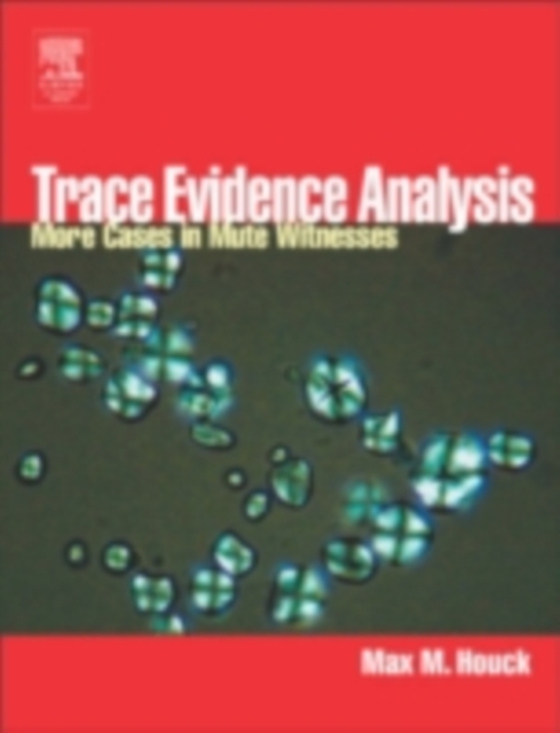
Trace Evidence Analysis e-bog
656,09 DKK
(inkl. moms 820,11 DKK)
Trace Evidence Analysis continues and builds upon the tradition of its successful companion title Mute Witnesses (2000). The book contains nine entirely new cases, each self-contained in its own chapter, covering everything from homicides to accident reconstruction. It includes contributions from some of the premier forensic scientists in the field who provide detailed accounts of the process ...
E-bog
656,09 DKK
Forlag
Academic Press
Udgivet
3 december 2003
Længde
300 sider
Genrer
Crime and criminology
Sprog
English
Format
pdf
Beskyttelse
LCP
ISBN
9780080474625
Trace Evidence Analysis continues and builds upon the tradition of its successful companion title Mute Witnesses (2000). The book contains nine entirely new cases, each self-contained in its own chapter, covering everything from homicides to accident reconstruction. It includes contributions from some of the premier forensic scientists in the field who provide detailed accounts of the process of collection, classification, and analysis of microscopic evidence to draw definitive conclusions that solved actual cases. The book discusses the role of evidence in solving cases and explores the legal and ethical responsibility of the forensic scientist. It examines real-world application of scientific methods and analytic principles, including evidence gathering, instrumentation, sampling methods, analysis, and interpretation; and features over 160 full-color figures that illustrate the relevant case evidence. This book is a recommended resource for forensic microscopists and trace evidence analysts, crime laboratories, crime scene technicians, criminal investigators, forensic science professionals and students, and the legal community. Contains contributions from some of the premier forensic scientists in the field Discusses the role of evidence in solving cases and explores the legal and ethical responsibility of the forensic scientist Explores real-world application of scientific methods and analytic principles including evidence gathering, instrumentation, sampling methods, analysis, and interpretation Includes over 160 full-color figures that illustrate the relevant case evidence
 Dansk
Dansk

